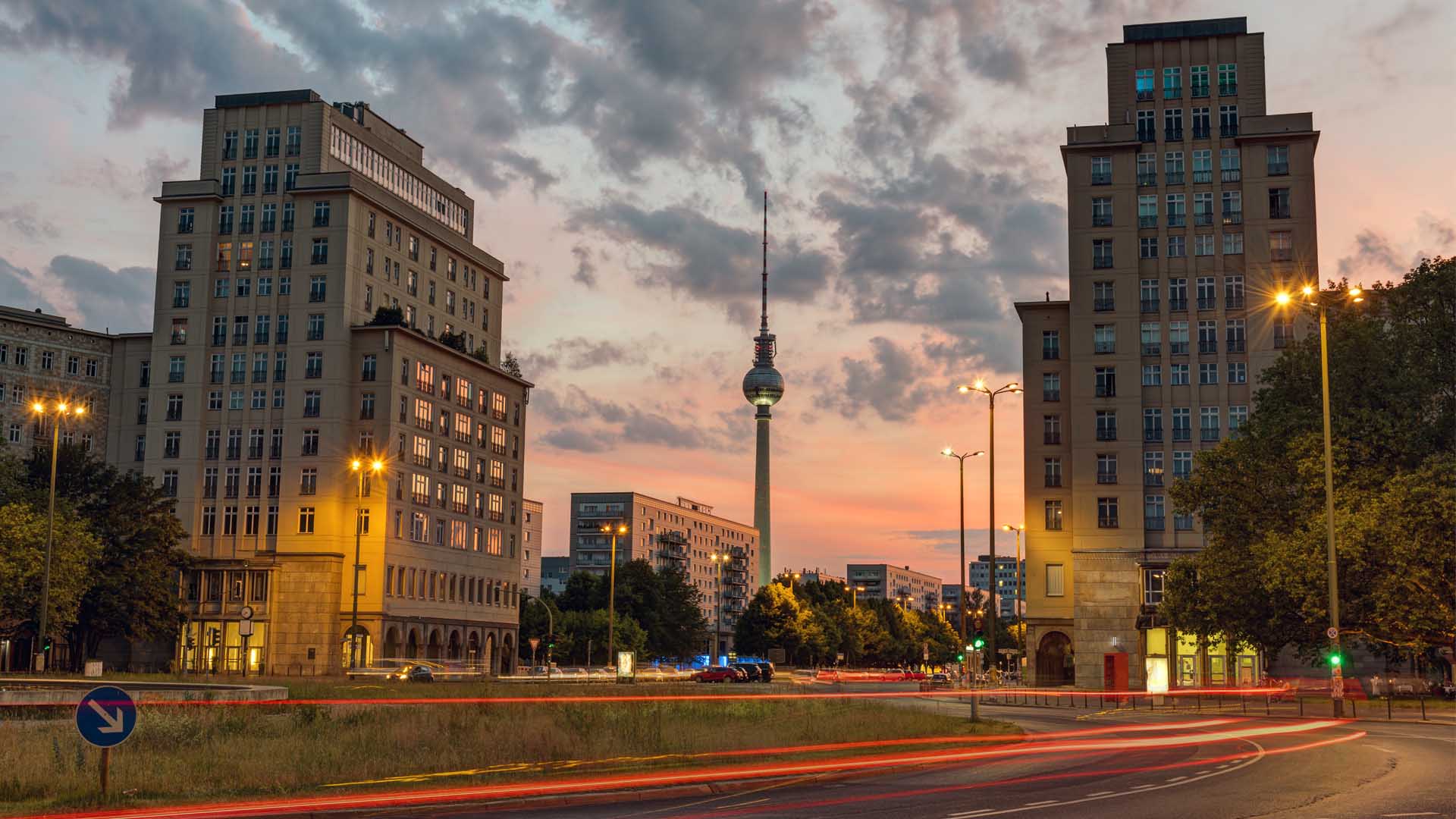Navigating the cost of living in Berlin in 2024 presents an intriguing financial landscape for newcomers and residents alike. Despite the city’s burgeoning startup scene, vibrant party culture, and rich tapestry of creative endeavors, Berlin remains more affordable than many of its European counterparts. This affordability, coupled with a modest annual population growth since 2015, underscores Berlin’s appeal as a hub of innovation and lifestyle without the daunting expense. The city stands out for being cheaper than 43% of other cities in Germany and a majority of cities in Western Europe, offering a cost-effective option for those seeking the dynamics of urban life without the excessive price tag.
As the article unfolds, it will explore various facets influencing the average cost of living in Berlin, from average rent in Berlin to healthcare expenses, utilities, food, groceries, and the cost for transportation and leisure. In examining these dimensions, readers will gain a comprehensive view of what it financially means to inhabit Germany’s capital in 2024. The insight provided aims not only to guide budgeting but also to reveal how Berlin maintains its status as an inclusive, engaging, and economically viable city for a diverse population.
Cost of Living in Berlin in 2024: Housing and Rent
Renting a home in Berlin varies significantly depending on the location and size of the property. Here’s an in-depth look at the current rental market in Berlin, providing insights for both potential renters and property investors.
Average Rent Prices by Apartment Size
The average monthly rent for apartments in Berlin reflects a diverse price range influenced by the size and location of the property. Here’s a breakdown:
- One-room apartments typically cost around €1,321 per month.
- For two-room apartments, renters can expect to pay about €1,748 per month.
The cost of renting furnished accommodations in Berlin also varies depending on whether the area is considered ‘expensive’ or ‘normal’:
- A 35 m2 furnished studio apartment costs about €1050 per month from KUMMUNI.
- A bigger 50 m2 furnished studio will cost up to €1,300.
The Impact of Location on Rent
Central locations such as Mitte are highly sought after, with a 75-square-meter apartment costing around €1,500 per month (Cold.) This price is consistent across various central locations, indicating a stable rental market in these prime areas.
Additional Costs and Considerations
- Apartment deposits (Kaution) can be as much as three times the cold rent, adding a significant upfront cost to new rentals.
Cost of Living in Berlin in 2024: Healthcare Expenses
In Berlin, healthcare expenses are a significant part of living costs, influenced by mandatory health insurance policies. Each resident, regardless of their income level, must have health insurance, which can vary dramatically in cost.
Mandatory Health Insurance
Health insurance in Germany is compulsory, with contributions linked closely to one’s income. The general public health insurance rate is set at 14.6% of an employee’s gross salary, capped at €360 per month. Additionally, a compulsory nursing care contribution ranges between 3.05% and 3.3%, ensuring comprehensive coverage.
Costs Across Different Insurance Types
The cost of healthcare coverage spans from €80 to €1,500 monthly, depending on whether one opts for public or private insurance. Public health insurance for students is notably affordable, ranging from €122.77 to €126.02 per month, providing a budget-friendly option for those under 30.
Insurance Costs for Different Demographics
Private health insurance premiums are not regulated and thus can vary, typically costing around €500-€600 for men and €600-€700 for women per month in 2024. This variation underscores the importance of carefully choosing between public and private options, especially for young, high-income individuals who might find savings in private plans.
Special Provisions for Specific Groups
Freelancers in artistic fields benefit from discounted private healthcare through the Künstlersozialkasse. Meanwhile, all children are covered under their parent’s public healthcare plans, showcasing the family-friendly nature of Germany’s health system.
Impact of Statutory Health Insurance Funding Deficit
Due to a funding deficit, statutory health insurance contributions are set to increase in 2024, estimated between 0.2% and 0.4%. This adjustment means most employees will see an additional 0.05% of their wages allocated to health insurance, with freelancers paying an extra 10 cents per €100 earned.
These structured healthcare expenses reflect Germany’s commitment to maintaining a robust system despite financial challenges, ensuring all residents have access to necessary medical care.
Cost of Living in Berlin in 2024: Utilities and Internet
Overview of Utilities and Internet Costs
In Berlin, managing utility expenses efficiently is crucial for residents aiming to maintain a cost-effective lifestyle. Here’s a detailed look at the utility costs including electricity and internet services, which are essential for daily living and work, especially for freelancers and remote workers.
Electricity Costs
Electricity prices in Germany rank among the highest globally. Residents can expect to pay between €45 and €70 per month for electricity, which often includes heating and hot water as part of the warm rent. However, prices can vary significantly based on consumption and the specific area of residence. Shopping around for providers using platforms like CHECK24 can help secure more competitive rates, with costs ranging from €0.30 to €0.40 per kWh, leading to a typical household monthly payment of €70 to €120.
Internet and Connectivity
The internet is a staple in modern homes and crucial for professionals working remotely. In Berlin, the average monthly cost for internet is approximately €39, but basic services (up to 100 Mbps) can be found for about €20 to €30, while faster services (higher than 100 Mbps) might cost between €40 and €50 per month. The main providers include Pyur, Vodafone, and Telekom, offering various packages to suit different needs and budgets.
Table: Average Monthly Costs in Berlin for Utilities and Internet
|
Utility Type |
Cost Range (€) |
Average Cost (€) |
Providers/Notes |
|---|---|---|---|
|
Electricity |
45 – 120 |
70 |
Costs include heating and hot water |
|
Internet (up to 100 Mbps) |
20 – 50 |
35 |
Basic connectivity for small households |
|
Gas |
59- 66 |
60 |
For a 50 m2 |
|
TV and Radio Tax |
– |
18.36 |
Mandatory per household |
Mobile and Streaming Services
For mobile phone services, the average cost is around €20 per month. Additionally, residents often subscribe to various streaming services, which can add up to about €30 per month. The mandatory TV and radio tax, known as Rundfunkbeitrag, is €18.36 per month per household, which covers public broadcasting services.
Understanding and managing these utility and internet expenses are vital for anyone planning to live in Berlin, especially given the high costs associated with electricity. By comparing providers and being aware of the average costs, residents can better budget their monthly expenses, ensuring they can enjoy the vibrant life Berlin offers without undue financial strain.
Cost of Living in Berlin in 2024: Food and Groceries
Overview of Grocery Shopping in Berlin
Berlin offers a wide array of grocery shopping options that cater to every budget and taste, making it an appealing city for those looking to maintain a cost-effective lifestyle. Major supermarket chains such as Edeka, Rewe, Lidl, and Netto are prevalent, providing residents with access to a variety of food products at competitive prices. The cost of groceries in Berlin is notably lower than in other major European cities, which is a significant advantage for residents.
Cost Comparison with Other Cities
The affordability of groceries in Berlin is enhanced by Germany’s advanced agriculture industry, which keeps the prices of essentials like meat, cheese, bread, and vegetables particularly low. This is a benefit not just in Berlin but across Germany, where there is little price difference between cities for basic food items. For instance, the price for a liter of milk is almost the same in Munich as it is in Berlin, showcasing the uniformity in food pricing across the country.
Budget-Friendly Shopping Tips
For those looking to stretch their euros further, shopping at discount superstores such as Aldi, Netto, and Lidl can lead to substantial savings. These stores offer lower prices on basic foods, fresh fruits, vegetables, and even beverages like wine and beer. Additionally, residents can take advantage of discount vouchers and bulk-buy offers on essentials, which are frequently available at these outlets.
Table: Comparison of Monthly Food Costs
|
Description |
Cost (€) |
|---|---|
|
Monthly groceries |
200 – 400 |
|
Dining out |
200 |
|
Eating at home |
250 |
|
Weekly shopping |
Under 50 (excl. alcohol and toiletries) |
Additional Savings Opportunities
Residents can also benefit from Germany’s bottle deposit scheme (Pfand), which offers refunds on almost all glass and plastic drink bottles. This not only encourages recycling but also provides a small return on purchases. Moreover, the DeutschlandCard program allows shoppers to collect loyalty points at various retailers, which can then be used to offset food shopping costs.
Dining Out in Berlin
While groceries are affordable, dining out in Berlin also presents good value for money. The average cost of a meal per person ranges from 15 to 30 euros, allowing residents and visitors alike to enjoy a variety of cuisines at reasonable prices. This makes Berlin a vibrant culinary hub, suitable for both casual diners and gastronomy aficionados.
By understanding the dynamics of food and grocery costs in Berlin, residents can effectively manage their budgets, making the most of what the city has to offer without compromising on quality or variety.
Cost of Living in Berlin in 2024: Transportation and Leisure
Berlin’s transportation network is extensive and efficient, providing numerous options for both daily commutes and leisurely exploration. The city’s public transport system includes the U-Bahn, S-Bahn, trams, and buses, ensuring that residents and visitors can navigate the city with ease.
Public Transportation Options and Costs
Berlin offers a variety of public transportation tickets to suit different needs and budgets:
- Monthly Public Transportation Ticket (AB Zones): Priced at €81, this ticket allows unlimited travel within the central AB zones of Berlin.
- Monthly Public Transportation Ticket (ABC Zones): For broader coverage, including the outskirts and nearby cities, the ABC zone ticket is available for €100.
- Semester Ticket: Universities often provide a discounted semester ticket for students, offering unlimited travel within specified zones. The cost varies depending on the university and the zones included.
For shorter trips, there are also convenient options:
- Single Ticket (Einzelfahrschein): Valid for a two-hour journey within the selected fare zones, making it ideal for quick trips across the city.
- Short Trip Ticket (Kurzstrecke): At a cost of €2.40, this ticket is perfect for traveling a few stops (up to three on S-Bahn or subway and six on buses and trams).
Special Fares and Considerations
Certain groups benefit from special fares or conditions:
- Children’s Tariff: Young children up to the age of five travel for free when accompanied. Children aged 6 to 14 enjoy reduced fare tickets.
- Persons with Severe Disabilities: Those with a ‘Schwerbehindertenausweis’ and a valid token can use all public transport services in the VBB area for free. An accompanying person and a service dog (if applicable) also travel at no cost.
Bicycles and Leisure Activities
Bicycles are a popular mode of transport in Berlin, and rental options are readily available:
- Daily rentals range from €8 to €12, while monthly rates are between €30 and €50.
For leisure activities, Berlin offers a wealth of options at various price points:
- Museum and Exhibition Tickets: Typically range from €5 to €20, depending on the venue and any special exhibitions.
- Music Concerts and Gigs: Prices vary from €10 to €50, influenced by the artist and venue.
- Parks and Public Spaces: These are free to explore and offer a peaceful retreat from the urban environment.
Table: Overview of Transportation and Leisure Costs in Berlin
|
Item |
Cost Range (€) |
Notes |
|---|---|---|
|
Monthly Public Transport (AB) |
81 |
Unlimited travel within central zones |
|
Monthly Public Transport (ABC) |
100 |
Covers more extensive areas including outskirts |
|
Single Ticket |
Based on fare zones |
Valid for two hours of travel |
|
Short Trip Ticket |
2.40 |
Ideal for quick, short journeys |
|
Bicycle Rental (Daily) |
8 – 12 |
|
|
Bicycle Rental (Monthly) |
30 – 50 |
|
|
Museum Tickets |
5 – 20 |
Varies by venue and exhibition |
|
Concert Tickets |
10 – 50 |
Depends on the artist and venue |
|
Parks and Public Spaces |
Free |
Open for exploration and relaxation |
This comprehensive overview of transportation and leisure options in Berlin highlights the city’s commitment to providing accessible and varied services, enhancing the quality of life for its residents and attractiveness for visitors.
Throughout this exploration of Berlin’s cost of living in 2024, we have navigated through the varied expenses from housing and healthcare to utilities, groceries, and transportation, underscoring the city’s relatively affordable cost of living in comparison to other European capitals. The insights paint a detailed picture of what life financially entails in Berlin, showcasing its appeal to a wide demographic including students, professionals, and families. Despite the challenges such as the housing shortage and the anticipated changes in the rent index, Berlin continues to offer a compelling mix of vibrant city life and economic viability.
Looking ahead, the anticipated adjustments in healthcare contributions and the implementation of the new rent index suggest a landscape in constant evolution, with implications for residents and prospective movers. However, Berlin’s steadfast commitment to inclusivity and affordability, the rich cultural tapestry, and its dynamic lifestyle options remain undiminished. As we’ve highlighted, careful budgeting and an understanding of the city’s financial fabric can enable both newcomers and long-standing residents to thrive in this bustling metropolis, making Berlin an unwaveringly attractive place to live in 2024.
FAQs
What are the expected living expenses in Germany in 2024?
In 2024, an individual living in Germany will need at least €934 per month, which amounts to €11,208 annually, or approximately $1,018 monthly and $12,217 yearly in US dollars. This estimated cost of living is quite moderate when compared to other European nations.
How much income is considered comfortable for a single person living in Berlin?
To enjoy a comfortable lifestyle in Berlin, a single expatriate should budget between €1,500 and €2,500 per month, which translates to about $1,637 to $2,729 in US dollars.
Is a monthly income of 3,000 euros considered substantial in Germany?
Yes, Germany’s annual gross salary ranging from 64,000 to 70,000 euros is substantial. This equates to a net income of approximately 40,000 to 43,000 euros per year, or between 3,300 and 3,600 euros net per month. It is important to note that salaries can vary significantly depending on the location within Germany.
Would an annual salary of 60,000 euros be considered high in Berlin?
Absolutely, an annual salary of 60,000 euros is regarded as very good in Berlin, where the average income in 2017 was around 37,500 euros. With such a salary, you would be among the top earners in the city, earning more than 80% of Germans.









